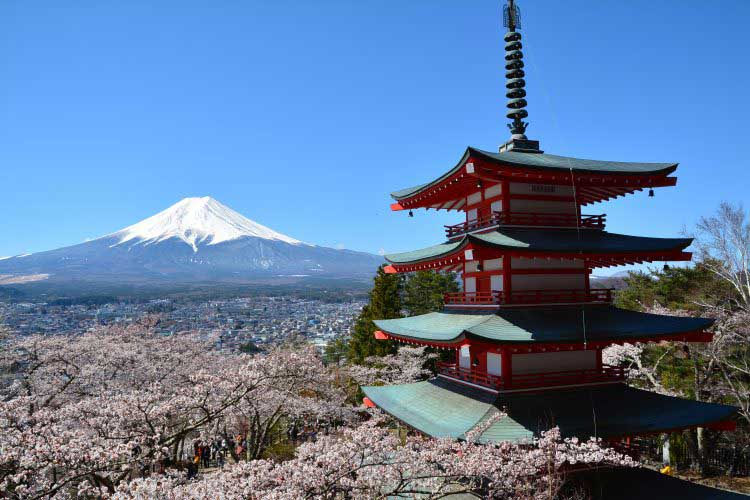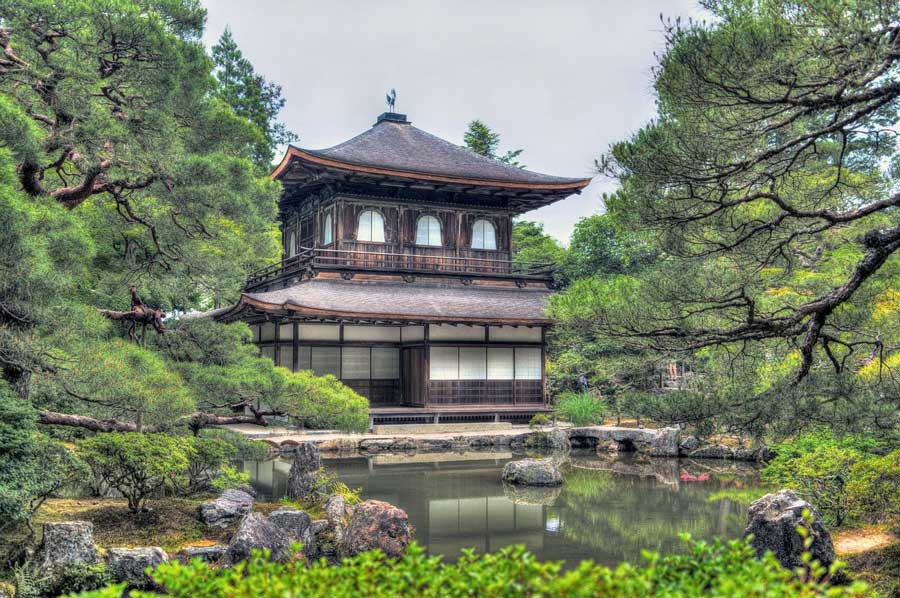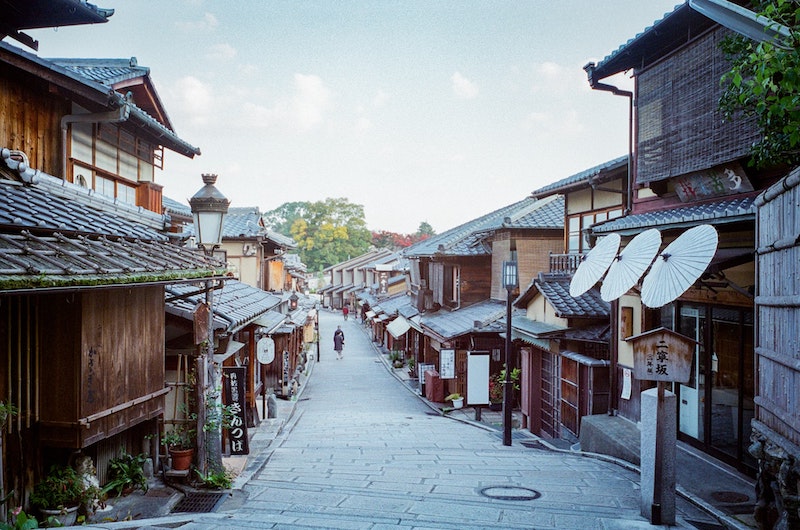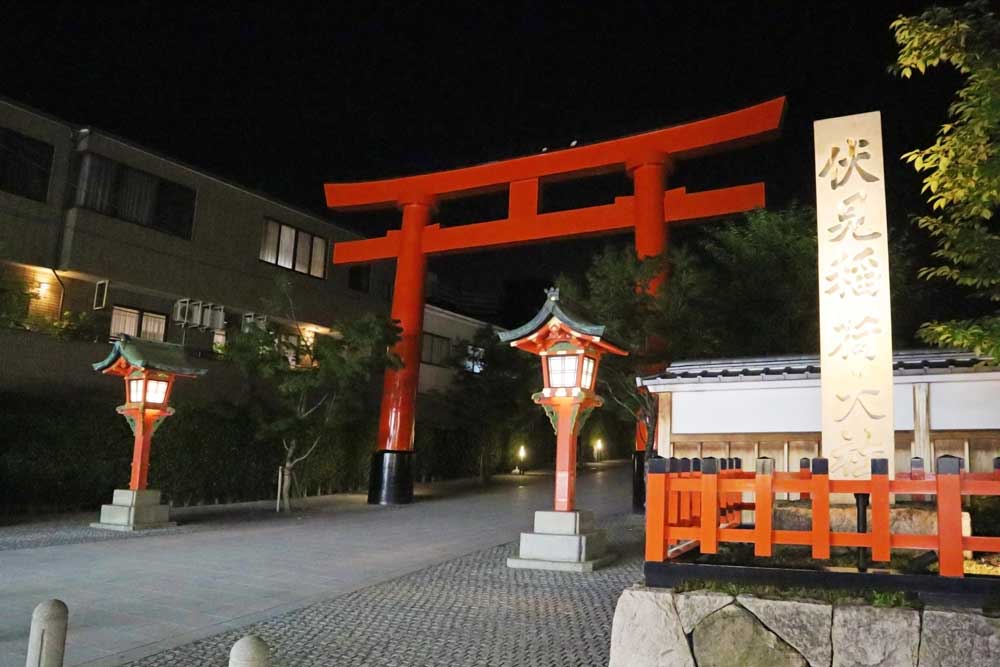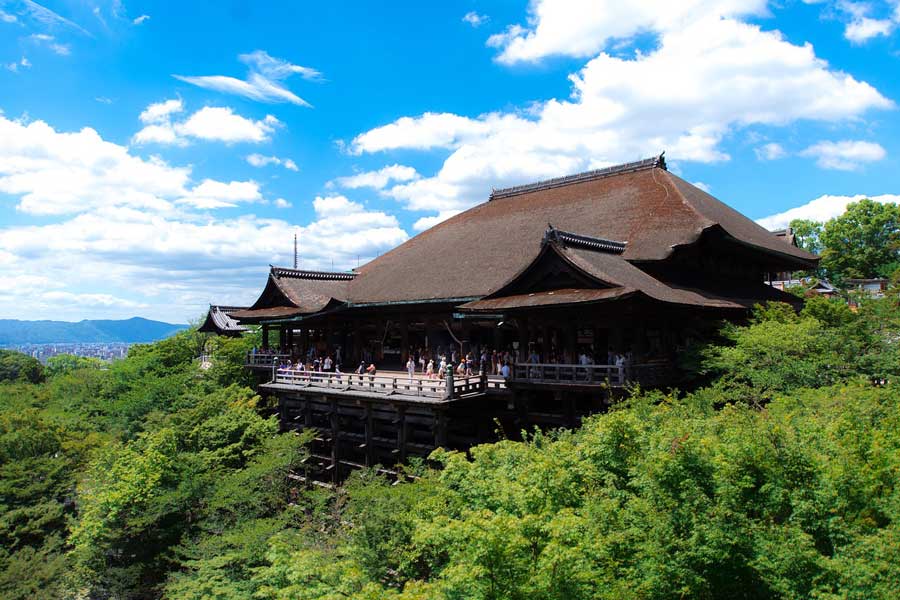
日本で最も有名な寺院のひとつである清水寺は、京都市東山区清水にある北法相宗の本山で、「清水の舞台から飛び降りる」の言葉でもよく知られています。
一年中参拝客で混雑していますが、秋には目を見張るほど美しい紅葉に包まれ、圧倒的な存在感を放っています。
今回は、この清水寺を英語で説明する簡単な表現をご紹介していきます。
ご興味のある方は、当サイトで 英語クイズ(5000問) を出題しておりますので是非ご覧ください。
目次
清水寺へのアクセス
Kiyomizu-dera temple can be accessed from Kyoto station by City Bus #100 or #206 to either Gōjōzaka bus stop or Kiyomizu-michi bus stop. From there, it is a 10-minute walk uphill to the temple.
(清水寺は、京都駅から五条坂または清水道のバス停まで市バス100系統または206系統で行くことができます。バス停からは上り坂を歩いて10分です。)
Alternatively, the temple is about a 20-minute walk from Kiyomizu-Gojo Station along the Keihan line.
(または、京阪電鉄の清水五条駅から20分ほど歩きます。)
清水寺の説明
Kiyomizu-dera temple was founded in 778, during the Nara period and its present buildings were reconstructed in 1633.
(清水寺は奈良時代の778年に創建され、現在の伽藍は1633年に再建されたものです。)
The temple was registered on the list of UNESCO World Heritage Sites in 1994.
(1994年に世界遺産に登録されました。)
The architecture is famous because the Hondō is built on a steep cliff, and the platform is supported by 139 pillars without using a single nail.
(清水寺の建築が有名なのは、本堂が急な崖の上に建てられていて、139本の柱で支えられたその舞台は釘が一本も使われていないからです。)
It’s such great architecture, considering the technology they had at the time.
(当時の技術を考えると、素晴らしい建築です。)
The large veranda-like stage was built for sacred dances and music. The dancing is not performed for visitors but for the principal deity of the temple, Kannon.
(舞台は舞楽のために建てられましたが、参拝者ではなく本尊である観音菩薩のための舞を奉納するための場所です。)
In the fall, you can enjoy a spectacular panoramic view of maple trees from the wooden deck.
(秋には、木製の舞台から紅葉の壮大な景色を見渡すことができます。)
Situated on top of Otowa Mountain on the east side of Kyoto, Kiyomizu-dera Temple offers a commanding view of the city rising out of a sea of maple.
(京都の東側の音羽山の上にある清水寺からは、もみじの海から現れる街の絶景を眺めることができます。)
Another attraction of this temple is the Otowa no Taki (waterfall), where the waters are divided into three small streams.
(清水寺でもう一つ注目すべきは音羽の滝で、3本の流れに分かれています。)
“Kiyomizu” refers to the pure/clear water that comes from the spring that supplies the waterfall.
(清水とは、滝へと通じる泉から湧き出る澄んだ水のことを指します。)
Each of the streams is believed to have a different blessing, such as long life, love, and wisdom.
(それぞれのお水は、長寿、恋愛、知恵のご利益があると信じられています。)
Worshipers can drink clear water with special long-handled ladles from one of the streams, though, as it is considered greedy if you were to drink from all of them.
(参拝者は、滝の1つから長い柄杓を使って澄んだお水を飲むことができます。これは、3つすべてから飲むと強欲だと見なされるからです。)
清水の舞台から飛び降りる
In Japan, there is a popular expression “Kiyomizu no butai kara tobioriru,” which means the moment when one takes a bold decision with no possibility of turning back.
(日本には、「清水の舞台から飛び降りる」という、「後戻りすることなく大胆な決断を下す瞬間」を意味する決まり文句があります。)
“To jump off the stage of Kiyomizu” is a famous Japanese aphorism, which is the Japanese equivalent of the English expression “to take the plunge.”
(日本語の有名な表現「清水の舞台から飛び降りる」は、「思い切ってやってみる」という意味です。)
During the Edo period, people used to believe that if they jumped off the Kiyomizu stage, their dreams would come true.
(江戸時代には、清水の舞台から飛び降りれば夢が叶うと信じられていました。)
Records show that from 1694 to 1864, there were 234 jumpers, with a survival rate of 85%. In 1872, jumping was officially prohibited.
(記録によると、1694年から1864年までに234人が飛び降り、生存率は85%でした。 1872年には飛び降り禁止令が出ました。)
西国三十三所巡礼
Kiyomizu-dera temple is the 16th stop on the Saigoku (Western Japan, Kansai) 33-Kannon-temple Pilgrimage and the image of the Eleven-headed Thousand-armed Kannon (Goddess of Mercy) is enshrined in the Hondō, Main Hall.
(清水寺は、西国三十三所巡礼の16番目の場所で、本堂には十一面千手観音像が祀られています。)
The Saigoku 33-Kannon-temple Pilgrimage is an ancient visiting tour of 33 Buddhist temples, centered on Kyoto and scattered all over the Kansai region.
(西国三十三所巡礼とは、京都を中心に関西地域に点在する33の仏教寺院を巡拝することです。)
